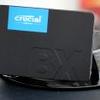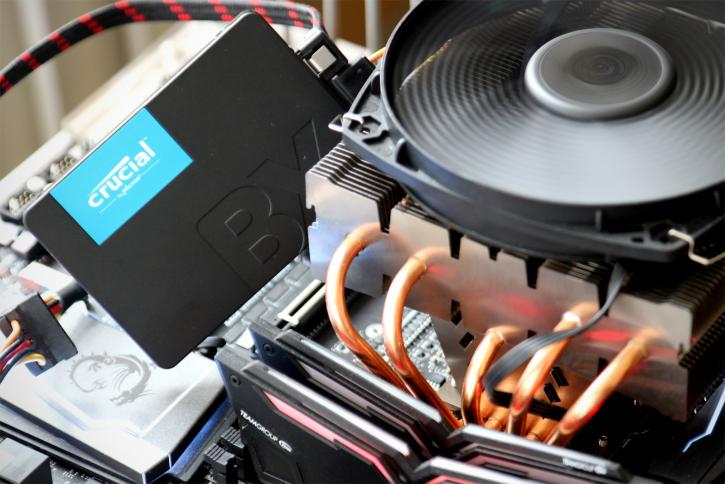Introduction
Crucial BX500 480 GB 2.5" SSD
Value for money - not QLC, this is a TLC SSD.
Crucial announced their new BX500 series SSDs. They did so quite silently at first, the press releases are a little shy and perhaps too shy as Crucial might have created the super value SSD (SATA3). The BX500 as such is just that, all about value, stuff that you drop in easily and add as fast storage. And with advertised performance numbers in the 540/500 MB/sec ranges It is available in 120, 240 and 480 GB versions offering that familiar performance at 540 MB/sec reads, 540 MB/sec writes (sequential). The official and Random Write IOPS for all models have not been listed, but hey, we can measure that. We've already mentioned that the prices on these units are just terrific, 29 bucks for the 120 GB model, 49 bucks for the 240 GB model and for 89 USD you can grab the 480 GB model. These are MSRP prices, so in a couple of weeks, you may expect even lower street prices.
The 120 GB version has a TBW (Terabytes written) value of 40 TB, that is 80 TB for the 240 GB model and 120TB written for the 480 GB model. That is a lower than normal for TLC NAND, and Crucial is not mentioning the NAND type used on its packaging or website. So we figured the BX500 is making use of QLC already, quad level cell NAND, a NAND technology that writes four bits per cell. However, after inquiring, they denied this and stated, it is TLC NAND. It is a DRAMless design product paired with the proven very reliable SM2258XT controller. To cope with the TLC write gap, Crucial created a big SLC written buffer on these SSDs.
NAND flash memory (the storage memory used inside an SSD) has become cheaper thanks to the new 64-layer fabrication and this year and the next we'll see a move to QLC NAND as well. MLC writes 2 bits per cell, TLC 3 bits per cell and QLC four bits per cell. You can see both the complication and advantage here, you can store more data in the NAND cells, increasing volume sizes. But you can also see a performance hit with an increasing write bottleneck (which you can buffer with SLC cached, DRAM or Host Memory Buffer on NVMe). Endurance is also a factor, there should be less of it however with modern age wear and care technologies it still is not an issue. We'll talk a bit more about that on the next page though.
Let me just quickly mention it again though, prices merely a few years ago settled at just under 1 USD per GB for NAND storage. These days a good NVMe SSD can be found under 50 cents per GB. With parties like Samsung, Toshiba, and Micron the prices have dropped towards and below the 30 cents per GB marker for SATA3 TLC based units. This means that SSD technology and NAND storage have gone mainstream and due to the lower prices, the volume sizes go up as well. A couple of years ago a 64 GB SSD was hot stuff, then slowly we moved to 120 GB, last year 240 GB for an SSD in a PC was the norm, this upcoming year we'll transition slowly to roughly 500 GB and 1 TB per SSD as the norm with sub prices for TLC NAND in the 20 to 25 Cents per GB range. With the market being so competitive, it brought us to where we are today. It is all about value, today's tested drive for example now sits at 18~19 cents per GB (USD), and trust me, that price will drop in 2019, significantly.
Proper volume SSDs at acceptable prices with good performance and low access times. Not one test system in my lab has an HDD anymore, everything runs on some form of NAND storage, while I receive and retrieve my bigger chunks of data from a NAS server here in the office. The benefits are performance, speed, low power consumption, no noise, and good reliability.
Micron (the company behind Crucial) last week has announced the BX500 series up-to 480 GB, these drives are fitted with new 64-layer vertically stacked TLC NAND. Crucial guarantees this 480GB SSD for 3 years under warranty and/or a 120TB (terabytes) written (TBW) for this model. That's 65GB writes per day for 5 years continuously. Have a peek and then let's head onwards into the review.


